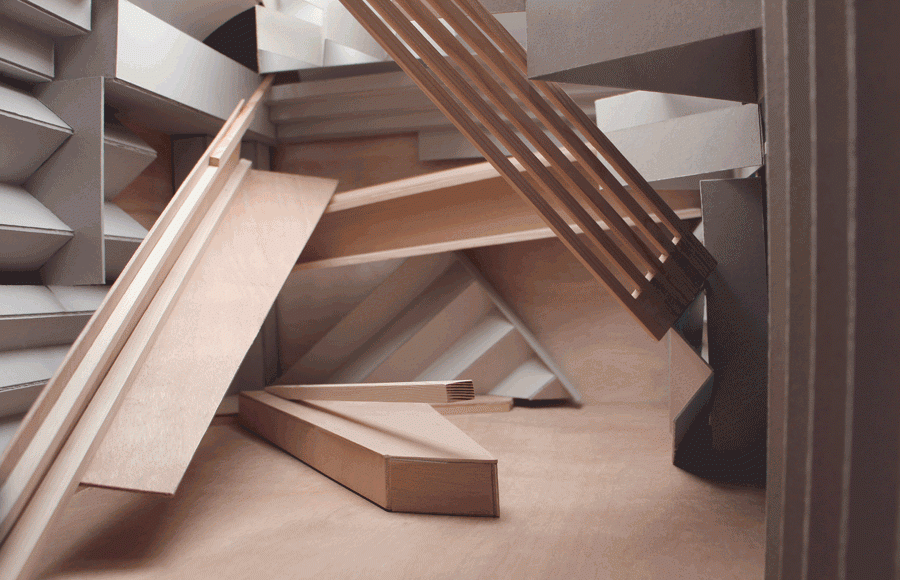ArtReview sent a questionnaire to artists and curators exhibiting in and curating the various national pavilions of the 2017 Venice Biennale, the responses to which will be published daily in the lead-up to the Venice Biennale opening (13 May – 26 November).
Xavier Veilhan is representing France. The pavilion is in the Giardini.
What can you tell us about your exhibition plans for Venice?
I am creating an overall installation that will transform the pavilion into a sort of wooden grotto and that will host a functional recording studio for about 80 musicians. Throughout the seven months of the Biennale the public will be invited to that moment of creation of new musical work.
How is making a show for the Venice Biennale different to preparing a ‘normal’ exhibition? Or another biennial?
I see this project as a form of celebration. It is without a doubt the most important one I have yet worked on, not only because it takes place in the city of Venice, but also because of the scale of this competition. The concept of national representation, which is an idea I still often question, does have a big impact. People do want to be represented by something they can be proud of. That makes the Venice Biennale somewhat different from any museum or gallery exhibition. It is a recognition and a responsibility.
There are a huge number of biennial exhibitions across the world nowadays. Do you think the Venice Biennale still has a special status, and why?
I believe the Venice Biennale is the first one in terms of chronology and importance. It has been the stage for big changes in art history, like for example the famous turn to the United States in the 1960s with Robert Rauschenberg.
What does it mean to ‘represent’ your country? Do you find it an honour or is it problematic?
It is not problematic. It is merely a concept that originated more than 120 years ago, so of course the relation to national identity is very different nowadays. I think it is not a matter of identity anymore, but of point of view, according to your geographical situation and cultural background, and to how you react to other cultures.
The Venice audience is a diverse group. Who is most important to you? The artists, the gallerists, curators and critics concentrated around the opening, or the public which visits in the months that follow?
It would be a little bit hypocritical of me to say that everyone is equally important, because it is more important for me to have the respect and support of the professional community than of the casual visitor. On the other hand, when I project myself two months from now, at the start of the Biennale, I imagine the pavilion through the eyes of only one arbitrary person. That is whom I create it for.
Did you visit the last Venice Biennial? What’s your earliest or best memory from Venice?
I visited both the last art and architecture biennales in Venice. My fondest memory of Venice though is being on the water, on the boat I designed – the RAL 5015 – and speed from the Pinault dinner to the Lido. A somewhat exuberant experience, but very Venice! Ex aequo, I would say, was my visit to Roman Ondak’s 2009 Slovak pavilion: a very simple but beautiful garden and the best pavilion I have ever seen.
How does a having a pavilion in Venice make a difference to the art scene in your home country?
I think it will give a better exposure to my work and people will be more focussed on me, but I don’t know what exactly will change. Sometimes doing the French pavilion doesn’t change much at all in the next couple of years, so I am also trying to think about the near future and how to travel the show and create an extension after Venice.
You’ll no doubt be very busy, but what else are you looking forward to seeing?
I want to see people and friends from around the world and I can’t wait to see the different proposals from the other pavilions. We all work in the same frame but with completely different results. I’m also very curious to see Christine Macel’s proposal.
29 March 2017
